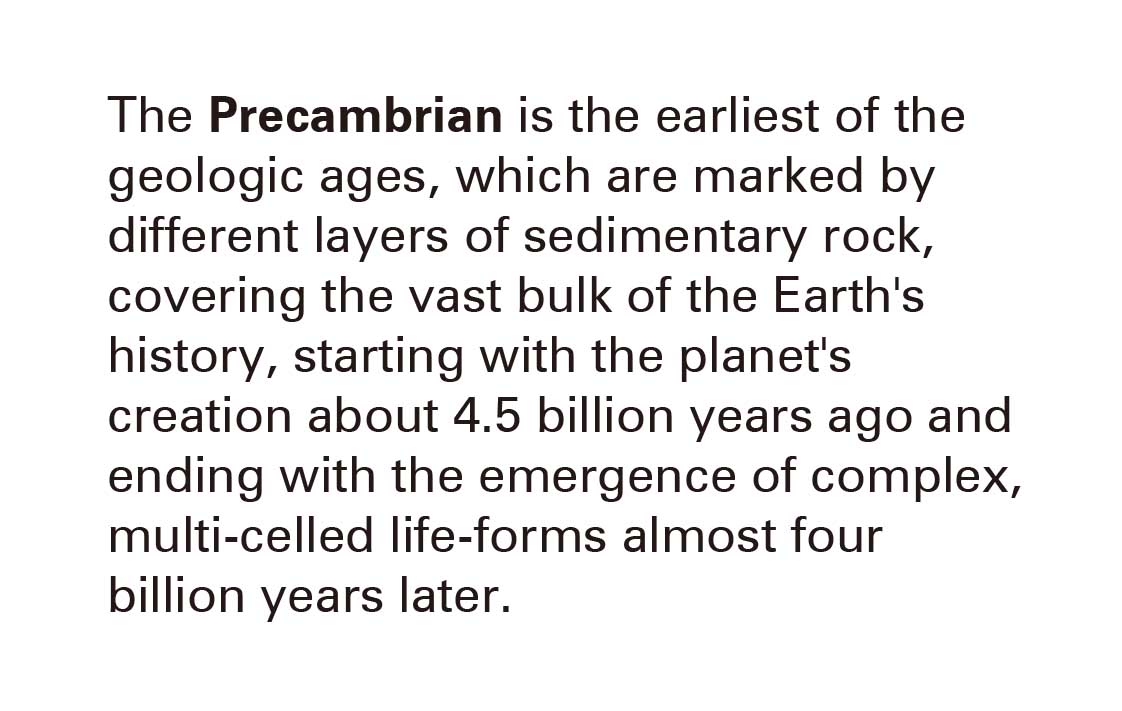Geologic Time Scale
“How can we talk about the age of the Earth?”
The Geologic Time Scale is a system of chronological dating that classifies geological strata through timescales1 and periods, developed by geologists to catalog major geologic events by studying various rock sections, fossilized samples, and prevalence of organisms in the earth's crust to establish distinct relationships between geologic events. Similar to the calendar that measures human time in calendar years, months, weeks and days, geologic time is broken down into distinguishable subdivisions of periods, eras and eons,2 that are designated through a subjective reading of the rock, as established through the global standards set by the international non-governmental body, The International Commission on Stratigraphy.3
The study of geologic time assists the exploration of natural resources, including mineral ores, oil, gas, and water, and is foundational towards understanding and predicting earthquakes, tsunamis, volcanoes and other natural disasters. Geologic time is divided into four principal divisions: Precambrian![]() ; Palezoic
; Palezoic![]() , in which evolution of water and life is evident; Mesozoic, the age of the reptiles; and Cenozoic, which is our current geological era.4
, in which evolution of water and life is evident; Mesozoic, the age of the reptiles; and Cenozoic, which is our current geological era.4


![]() Image source:
An illustration of a geologic time spiral Photograph: Joseph Graham, William Newman, John Stacy/United States Geological Survey
Image source:
An illustration of a geologic time spiral Photograph: Joseph Graham, William Newman, John Stacy/United States Geological Survey
References
1. “Geologic Time Scale.” In Wikipedia, March 3, 2022. https://en.wikipedia.org/w/index.php?title=Geologic_time_scale&oldid=1075003632.
2. “Geologic Time Scale - Geology (U.S. National Park Service).” Accessed March 7, 2022. https://www.nps.gov/subjects/geology/time-scale.htm.
3. “International Commission on Stratigraphy.” Accessed March 7, 2022. https://stratigraphy.org/.
4. “Geologic Time Scale - Geology (U.S. National Park Service).” Accessed March 7, 2022. https://www.nps.gov/subjects/geology/time-scale.htm.
1. “Geologic Time Scale.” In Wikipedia, March 3, 2022. https://en.wikipedia.org/w/index.php?title=Geologic_time_scale&oldid=1075003632.
2. “Geologic Time Scale - Geology (U.S. National Park Service).” Accessed March 7, 2022. https://www.nps.gov/subjects/geology/time-scale.htm.
3. “International Commission on Stratigraphy.” Accessed March 7, 2022. https://stratigraphy.org/.
4. “Geologic Time Scale - Geology (U.S. National Park Service).” Accessed March 7, 2022. https://www.nps.gov/subjects/geology/time-scale.htm.
 Image source:
An illustration of a geologic time spiral Photograph: Joseph Graham, William Newman, John Stacy/United States Geological Survey
Image source:
An illustration of a geologic time spiral Photograph: Joseph Graham, William Newman, John Stacy/United States Geological Survey